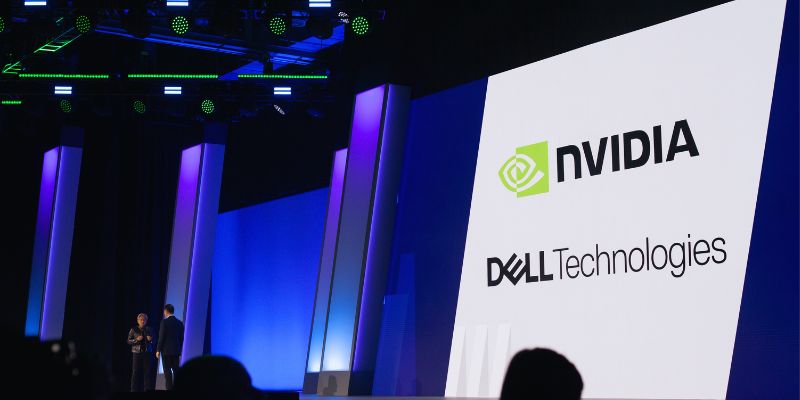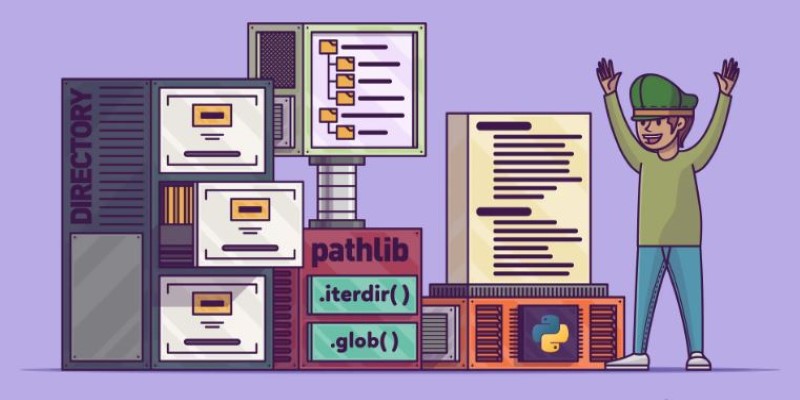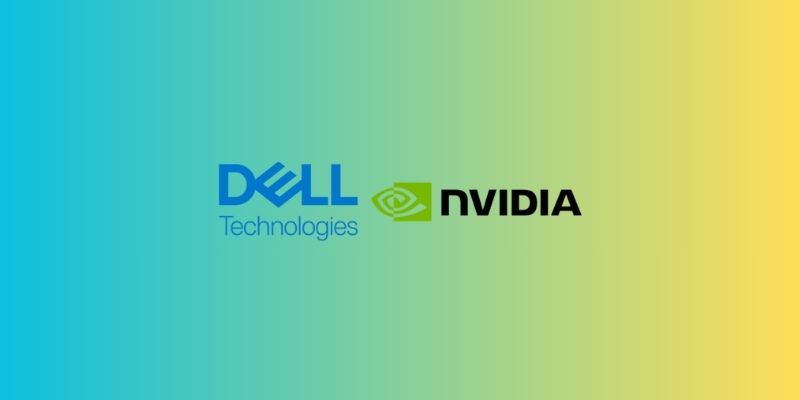Advertisement
Dell has formally entered the generative AI market through a strategic partnership with Nvidia. The collaboration aims to deliver high-performance infrastructure tailored for AI model development. It focuses on streamlining generative AI workflows and boosting enterprise productivity. Through this alliance, Dell will offer custom-built solutions that power generative AI applications, helping businesses deploy AI more quickly and effectively.
By combining Dell's broad enterprise reach with Nvidia's advanced GPU technologies, the partnership establishes a strong foundation for scalable AI adoption. This move positions Dell among the leading players in enterprise AI infrastructure, addressing the growing demand for real-time, intelligent computing tools. The collaboration could transform how businesses implement and scale generative AI solutions.

Dell's foray into generative artificial intelligence marks a change in corporate focus. Leveraging its hardware expertise, Dell aims to meet the specific demands of AI workloads. Partnering with Nvidia helps Dell transition from a traditional PC maker to a leader in AI infrastructure. Pre-configured systems for training and artificial intelligence model deployment will be part of Dell's offerings. This approach gives businesses tools to accelerate development and increase productivity.
Businesses will not have to create artificial intelligence platforms from scratch. Simplified deployment options enable Dell to build a user-friendly AI ecosystem. This action supports edge computing and expansion in cloud services. Dell leverages its market expertise to deliver impactful solutions by addressing key AI challenges across industries. Its systems, powered by Nvidia's advanced technologies, offer scalability and high-performance computing capabilities. This alliance positions Dell as a major player in the enterprise artificial intelligence space.

Nvidia greatly fuels Dell's AI aspirations. The company supplies GPUs, the foundation of generative artificial intelligence systems. These processors must handle billions of computations required to train large language models. Nvidia's experience ensures Dell's systems are optimized for performance for advanced artificial intelligence applications. The cooperation will combine Dell hardware with Nvidia's AI Enterprise program. Users may thus access tools for machine learning, deep learning, and inference deployment. In creating artificial intelligence solutions, developers will gain from speed and adaptability.
Tensor processing units and CUDA cores from Nvidia make effective AI model training possible. The hardware is designed for real-time AI inference for enterprise use. Nvidia provides AI libraries, APIs, and software stacks supporting different AI tasks. Teamwork ensures strong performance and seamless compatibility. The combined efforts of Dell and Nvidia help companies simplify AI installations. They collectively provide consumers in many industries with complete-stack artificial intelligence infrastructure.
Dell and Nvidia want to satisfy business artificial intelligence needs with customized infrastructure. The systems will be ready-configured and fast-deployment-oriented. These configurations enable the inference and training of AI models. Businesses can use them for more than data analysis and customer service bots. The architecture features Dell PowerEdge servers with Nvidia GPUs to deliver top-tier performance. It is meant to manage enormous artificial intelligence workloads with low latency.
Companies can grow their AI projects free from hardware restrictions. Support for big models comes via integration with Nvidia's AI Enterprise package. Businesses will also receive guidance on best practices and AI implementation strategies. The objectives are to lower setup time and raise speed to value. Dell offers remote monitoring and automated upgrades, among other things. That helps dependability and lessens maintenance problems—the alliance centers on practical applications like industry, banking, and healthcare. These sectors need dependable, rapid, safe artificial intelligence technologies to remain competitive.
The Dell-Nvidia alliance also improves cloud and edge-level artificial intelligence capabilities. Real-time data processing in businesses depends on low-latency technologies. Dell's technologies provide adaptability when applying generative artificial intelligence anywhere. For sectors including retail and industry, edge computing support is essential. Localized processing of data helps to improve speed and save bandwidth costs. Nvidia's GPUs ensure edge performance is not impacted. Using Nvidia's technologies, Dell includes artificial intelligence in its multi-cloud approach. It ensures seamless integration between on-premises and cloud environments. Companies get consistent artificial intelligence performance independent of infrastructure.
Additionally, Dell APEX supports AI-as-a-Service solutions with Nvidia improvements. Companies can experiment with AI workloads without having the infrastructure. This model reduces entry hurdles and improves access. The intention is to provide companies with scalable, safe, and effective artificial intelligence systems. With localized processing and strong hardware integration, companies obtain real-time information and faster decision-making ability.
The Dell-Nvidia partnership points to significant developments in artificial intelligence. Their combined power can help to define the next wave of corporate artificial intelligence acceptance. While Nvidia gives unparalleled AI processing capability, Dell offers scalable infrastructure. For companies without technological knowledge, the cooperation simplifies artificial intelligence. Fields like healthcare can apply it for predictive analysis and diagnosis. Risk modeling and fraud detection are two uses for it among financial companies. These tools are designed to integrate seamlessly with existing IT infrastructure.
Additionally, Dell and Nvidia are funding user assistance and training initiatives. That gives businesses investigating generative artificial intelligence confidence. The cooperation could encourage like-minded alliances all over the tech sector. Dell and Nvidia want to help build large-scale models as generative artificial intelligence develops. Turnkey solutions for particular sectors could be features of the next offerings. Companies can anticipate ongoing improvements and more extensive integration of artificial intelligence. The cooperation prepares the ground for more intelligent, effective business artificial intelligence solutions.
With scalable, high-performance infrastructure, Dell and Nvidia are changing business artificial intelligence. Their cooperation helps to simplify the integration of generative AI tools and speed deployment. Customized solutions built for large-scale AI workloads and real-time applications empower organizations. Support of edge computing and cloud settings helps adoption to be flexible and affordable. Dell's enterprise reach and Nvidia's processing capability create a potent mix. These days, industries may obtain useful, ready-to-use artificial intelligence systems.
Advertisement

Learn how to list files in a directory using Python with clear and practical methods. Covering os, glob, and pathlib, this guide is all you need to get started

Introducing ConTextual: a benchmark that tests how well multimodal models reason over both text and images in complex, real-world scenes like documents, infographics, posters, screenshots, and more

Explore CodeGemma, Google's latest AI model designed for developers. This open-source tool brings flexibility, speed, and accuracy to coding tasks using advanced code LLMs

Learn the basics and best practices for updating file permissions in Linux with chmod. Understand numeric and symbolic modes, use cases, and safe command usage

Microsoft’s new AI model Muse revolutionizes video game creation by generating gameplay and visuals, empowering developers like never before

Automation Anywhere boosts RPA with generative AI, offering intelligent automation tools for smarter and faster workflows

Dell and Nvidia team up to deliver scalable enterprise generative AI solutions with powerful infrastructure and fast deployment

Explore top business process modeling techniques with examples to improve workflows, efficiency, and organizational performance

Apple joins the bullish AI investment trend with bold moves in AI chips, on-device intelligence, and strategic innovation

How the SQL DATEDIFF function helps calculate the gap between two dates. This guide covers syntax, use cases, and system compatibility

Understand what are the differences between yield and return in Python. Learn how these two Python functions behave, when to use them, and how they impact performance and memory

Learn the role of Python comments in writing readable and maintainable code. Understand their importance, types, and best practices in this clear and simplified guide